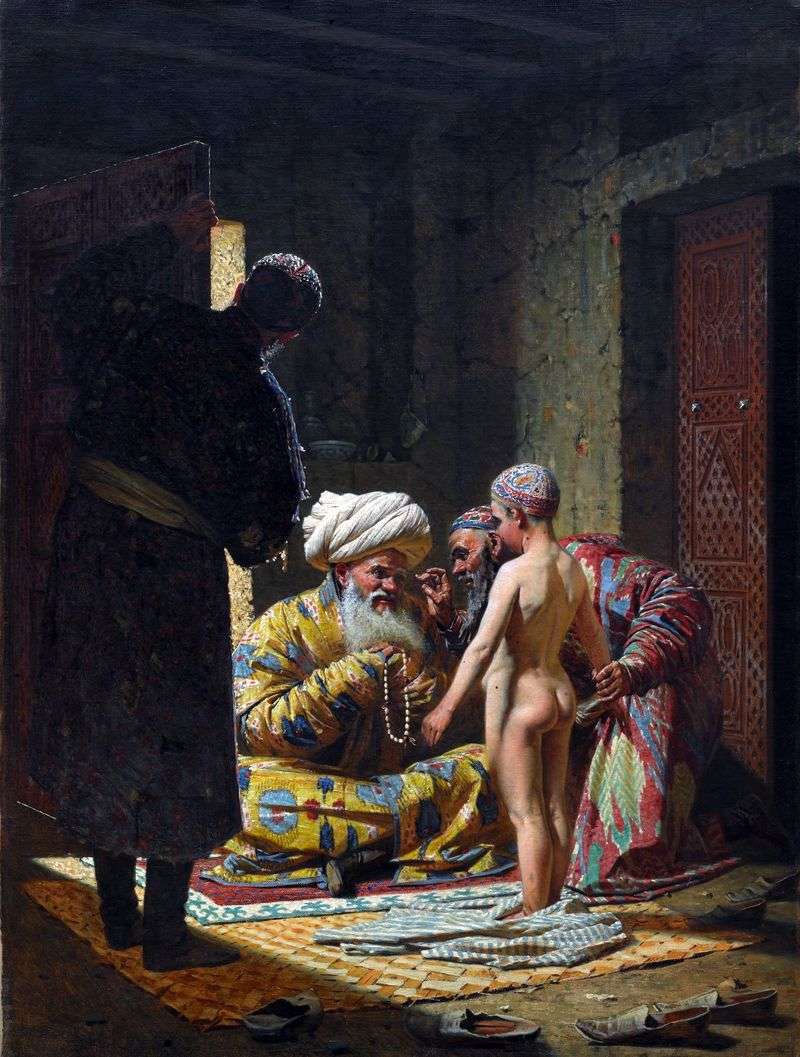
1872. Oil on canvas. 123 x 92.4. The Tretyakov Gallery, Moscow, Russia.
1870 Vereshchagin again traveled to Turkestan. As a result of these full dangers and adventures of travel, the artist created a huge series of sketches and drawings that depict the life and life of the peoples of Central Asia on the eve and during the Russian conquest. It must be borne in mind that at this time backward feudal relations were dominant in Turkestan, wild customs and rituals existed.
Along with the manifestations of the despotic power of local feudal princes, slavery and the slave trade took place. The religious fanaticism of the Muslim clergy flourished amidst the terrible poverty and ignorance of the population.
The continuous wars of one feudal lord against the other devastated the villages and ruined the people. All this, as well as the events of the war, made a strong impression on the sensitive artist. He planned to write a large series of paintings on the topic of the life of the peoples of Turkestan, over which he worked for several years. About half of the paintings in this series were devoted to depicting the way of life of the Central Asian peoples, the rest of the paintings belonged to the battle genre.
To the first group of paintings belong such famous canvases as “Opiumeids”, “Rich Kirghiz hunter with a falcon”, “Timur’s doors”, “Selling child slave”, “Uzbek woman in Tashkent”, “Samarkand zindan” and others.
In the painting “Selling child slave” the artist angrily denounces another gloomy side of the Central Asian reality of that time – the slave trade. Having depicted as a “living commodity” not an adult, but a defenseless, helpless child, Vereshchagin strengthened the tragic sound of the topic.
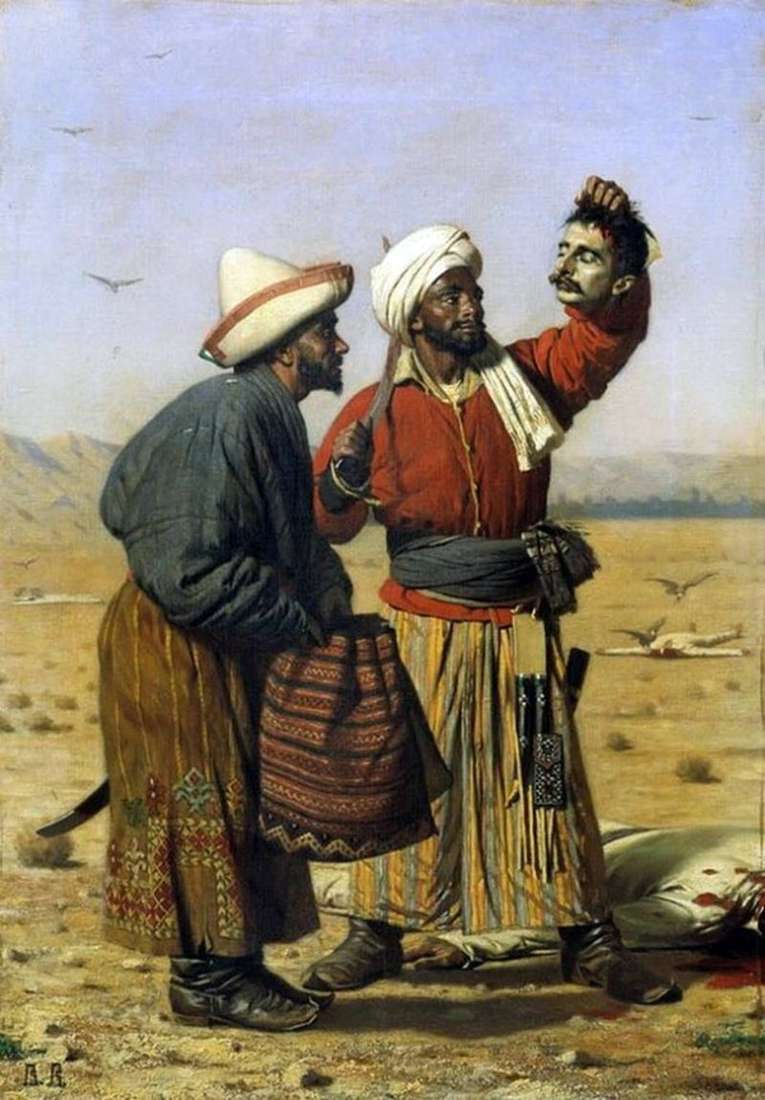 After good luck by Vasily Vereshchagin
After good luck by Vasily Vereshchagin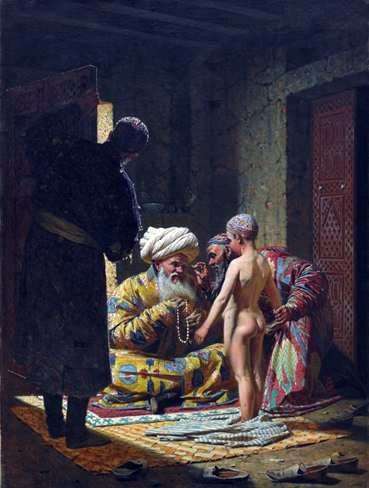 Venta de un niño esclavo – Vasily Vereshchagin
Venta de un niño esclavo – Vasily Vereshchagin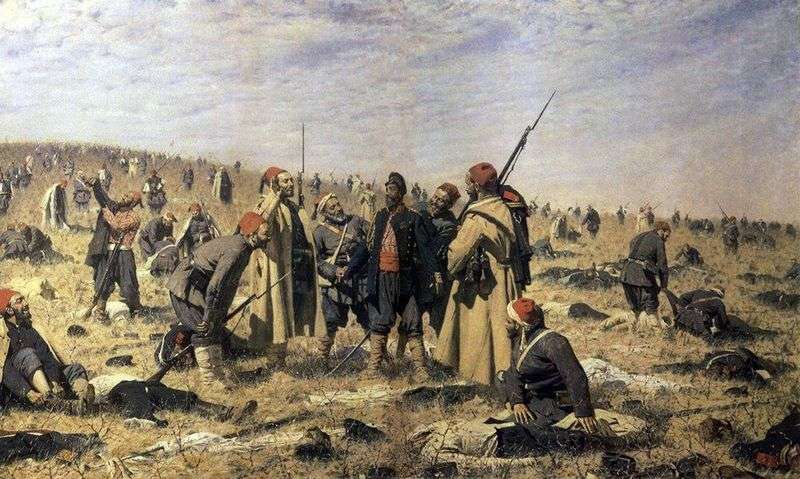 Winners by Vasily Vereshchagin
Winners by Vasily Vereshchagin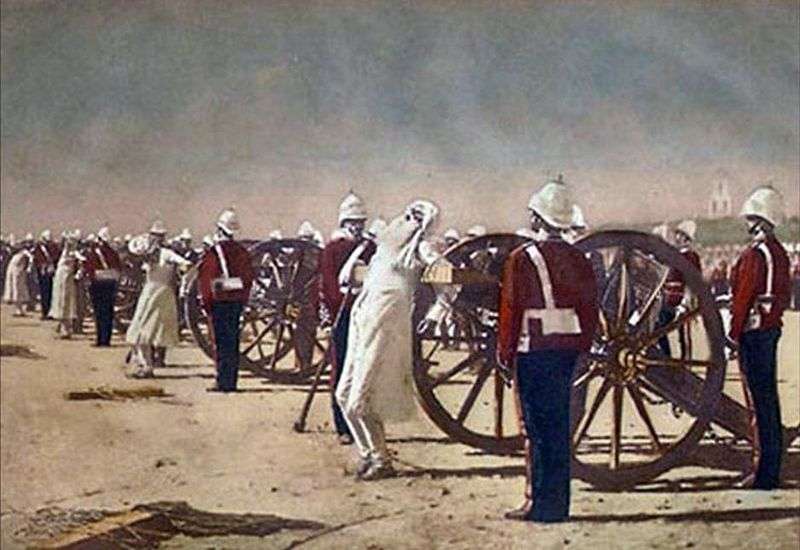 The suppression of the Indian Uprising by the British by Vasily Vereshchagin
The suppression of the Indian Uprising by the British by Vasily Vereshchagin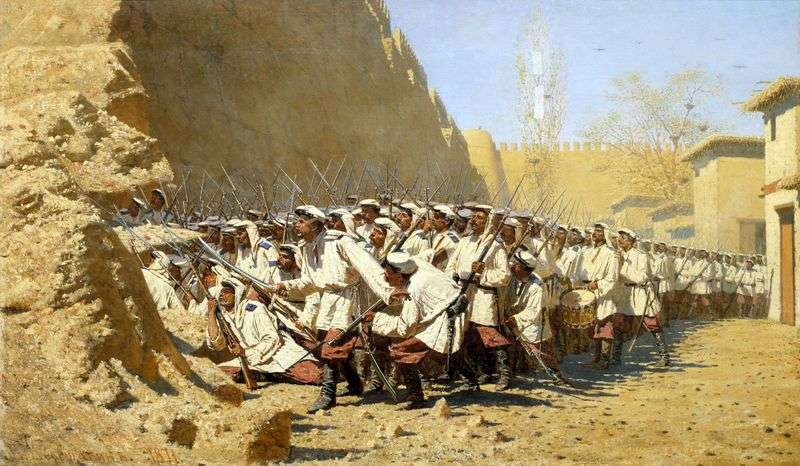 At the fortress wall. Let them come in by Vasily Vereshchagin
At the fortress wall. Let them come in by Vasily Vereshchagin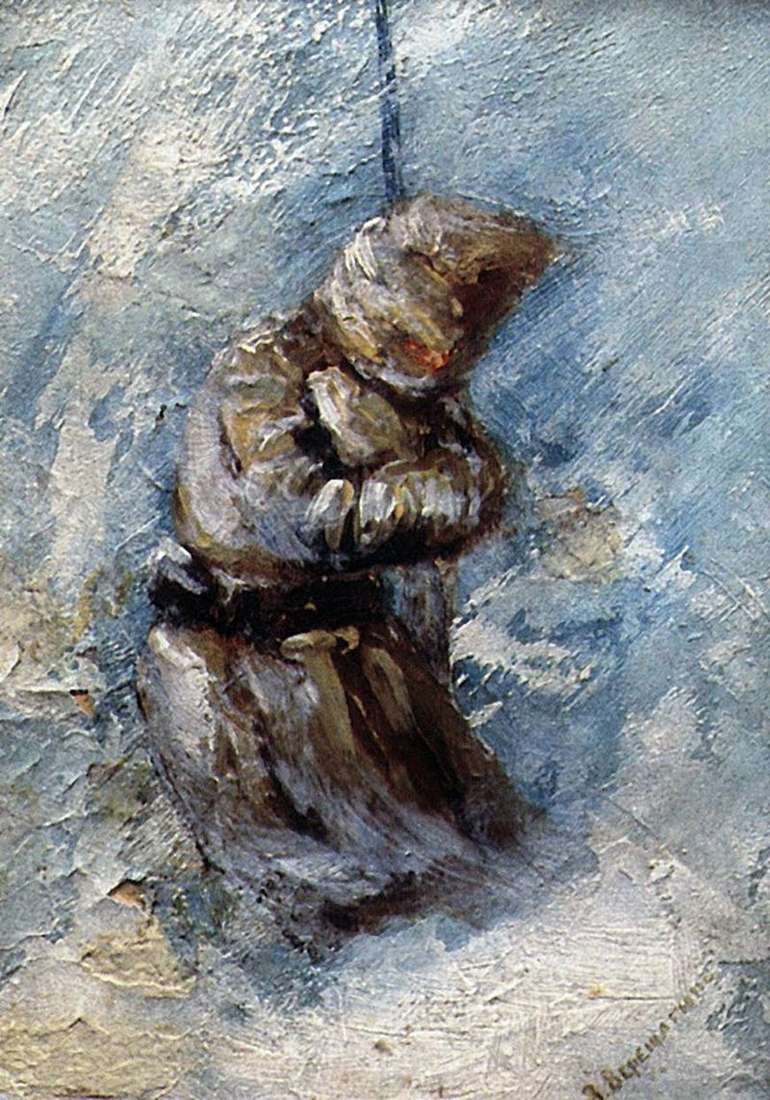 Everything is calm on Shipka! by Vasily Vereshchagin
Everything is calm on Shipka! by Vasily Vereshchagin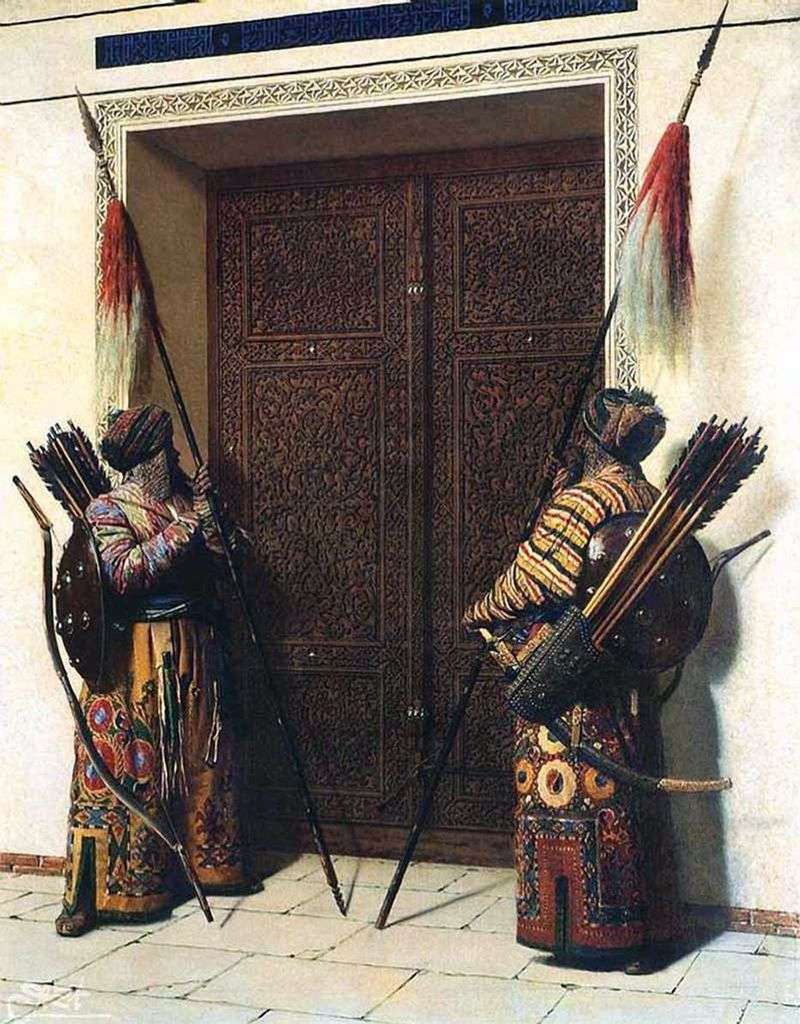 The doors of Timur (Tamerlane) by Vasily Vereshchagin
The doors of Timur (Tamerlane) by Vasily Vereshchagin Defeated. Panikhida by Vasily Vereshchagin
Defeated. Panikhida by Vasily Vereshchagin